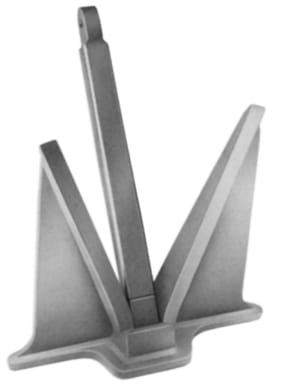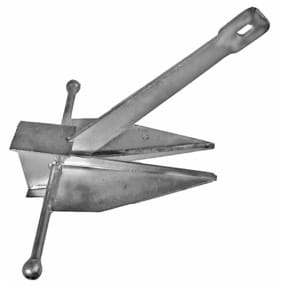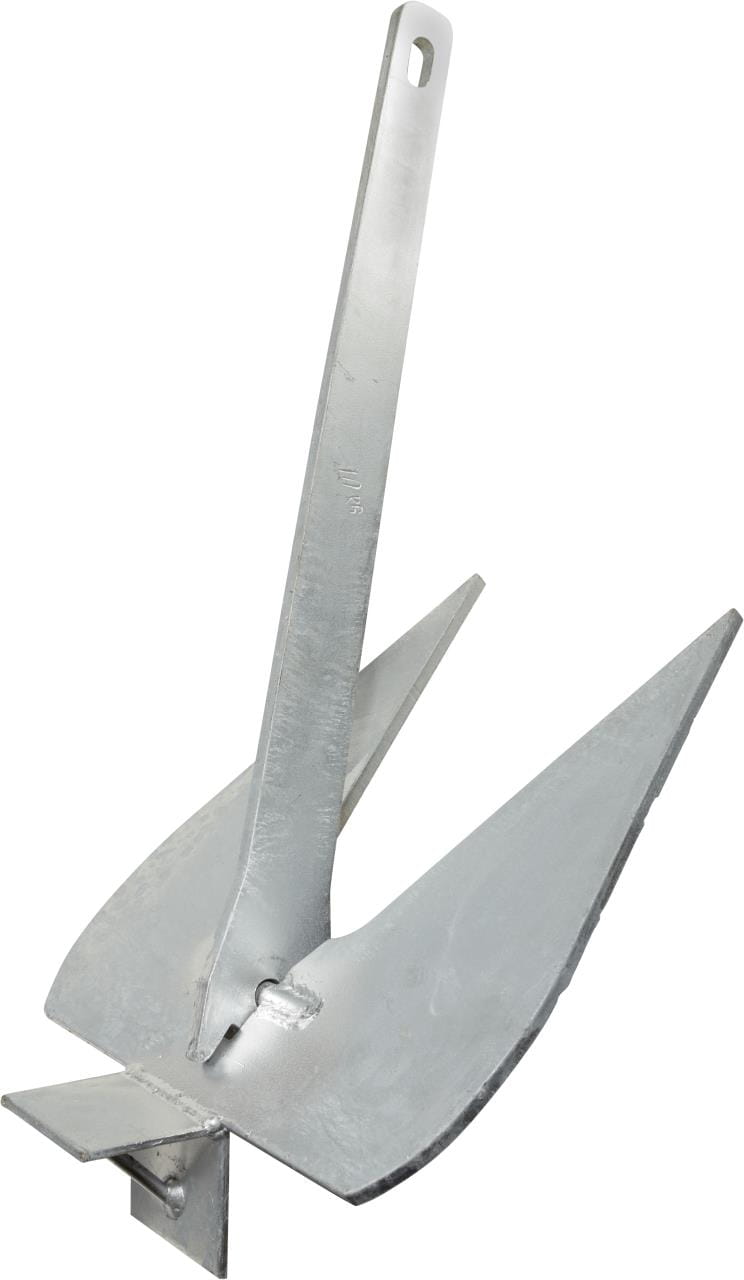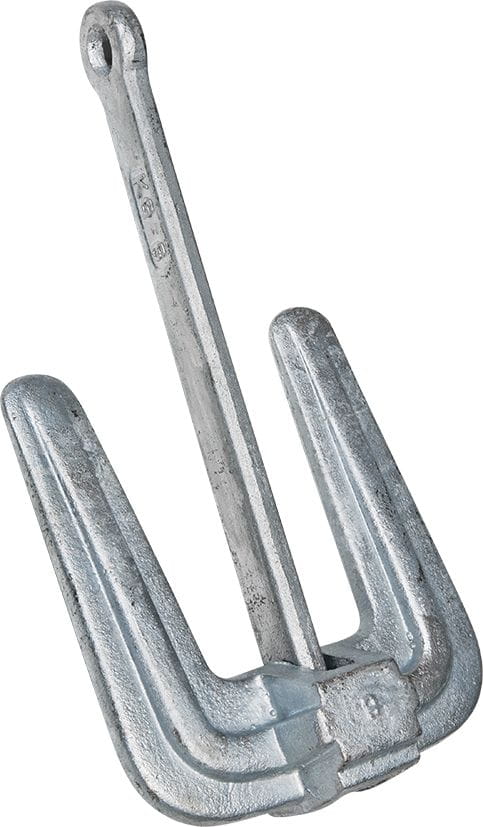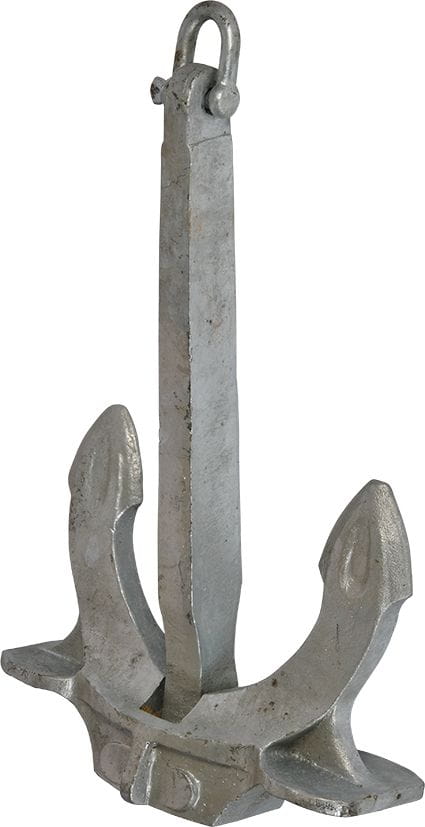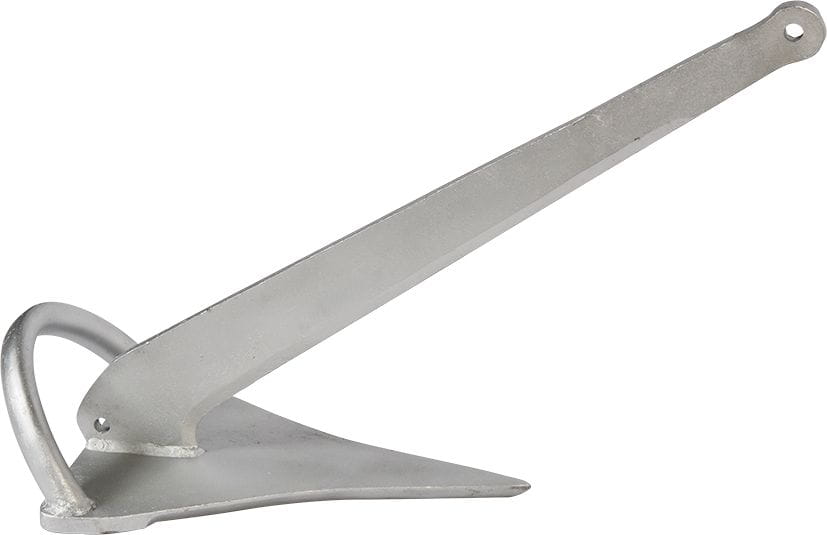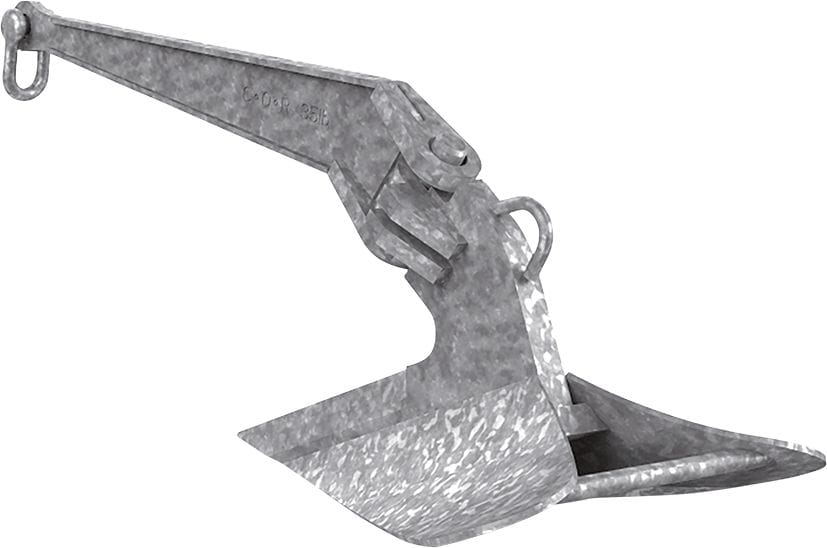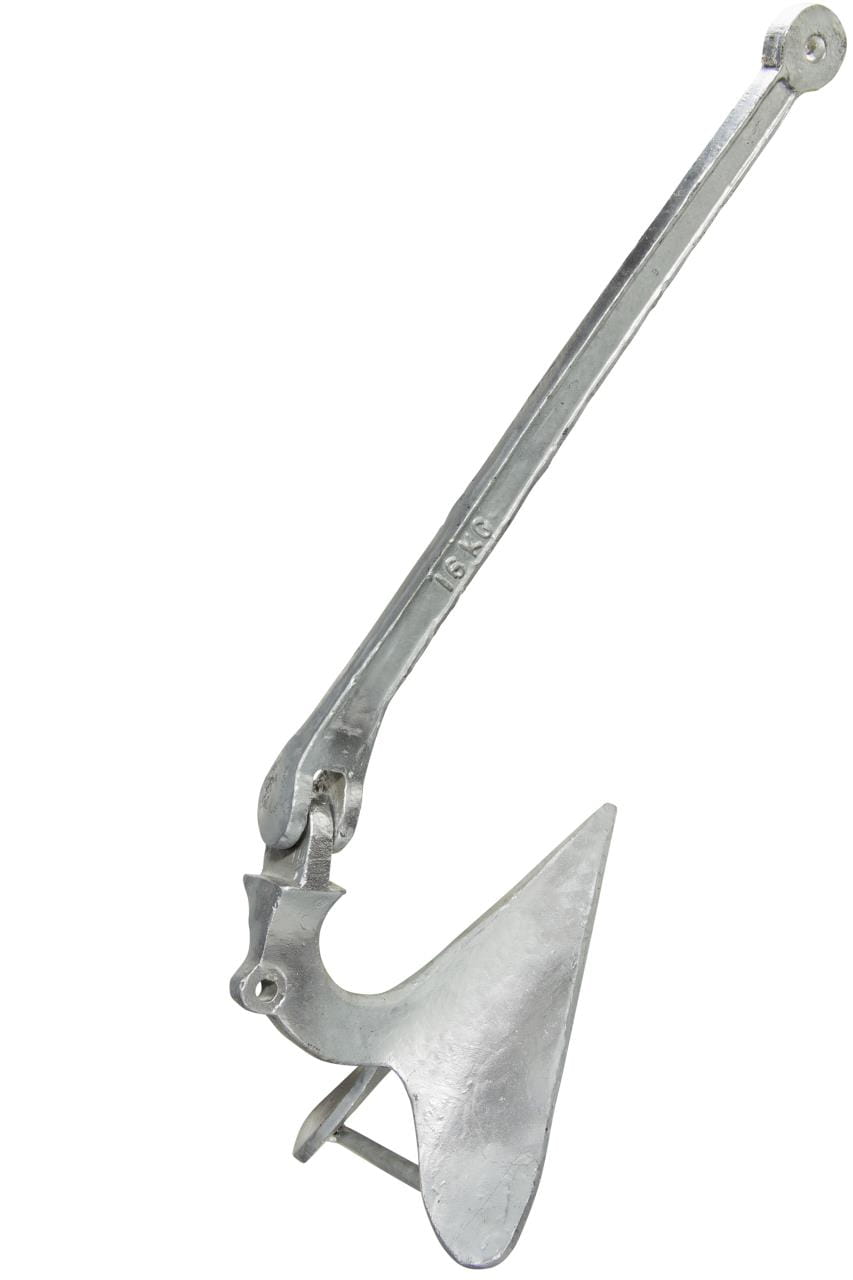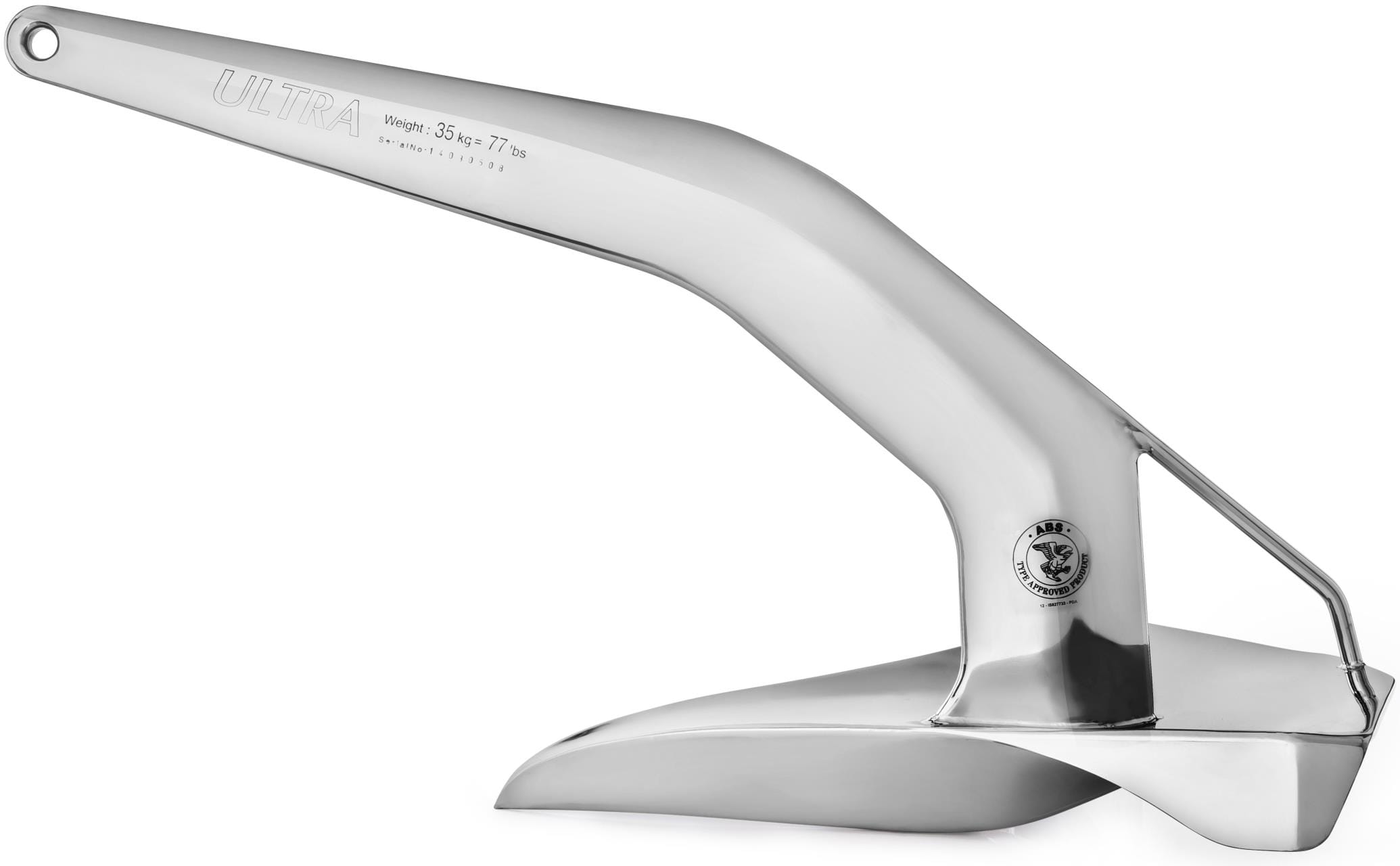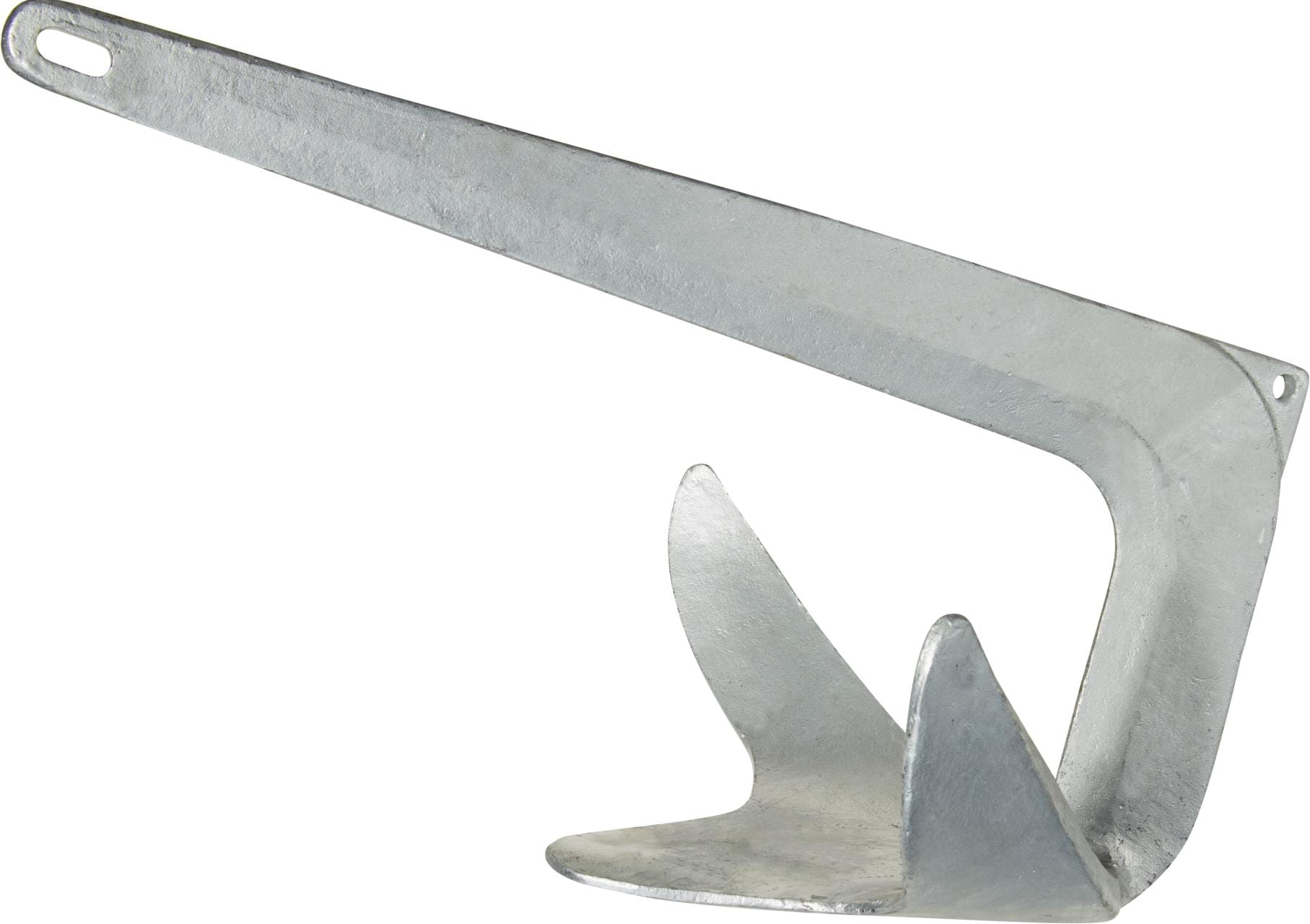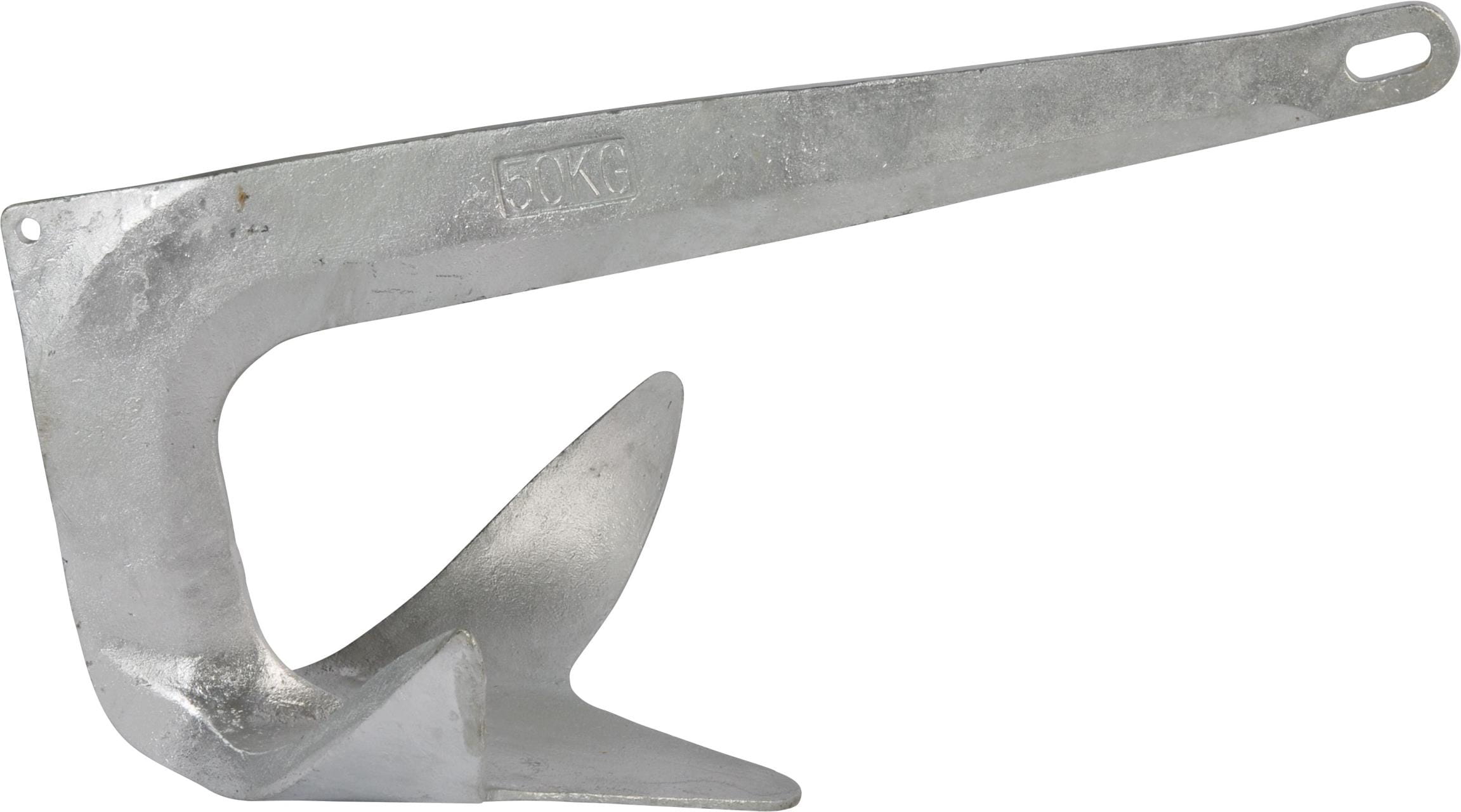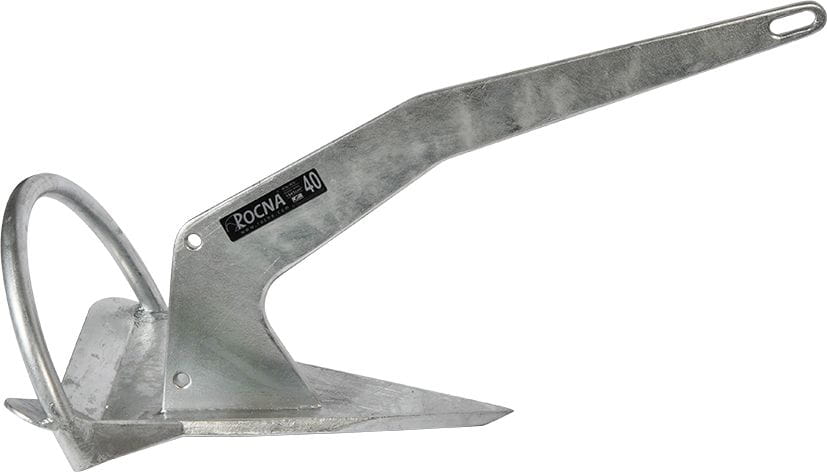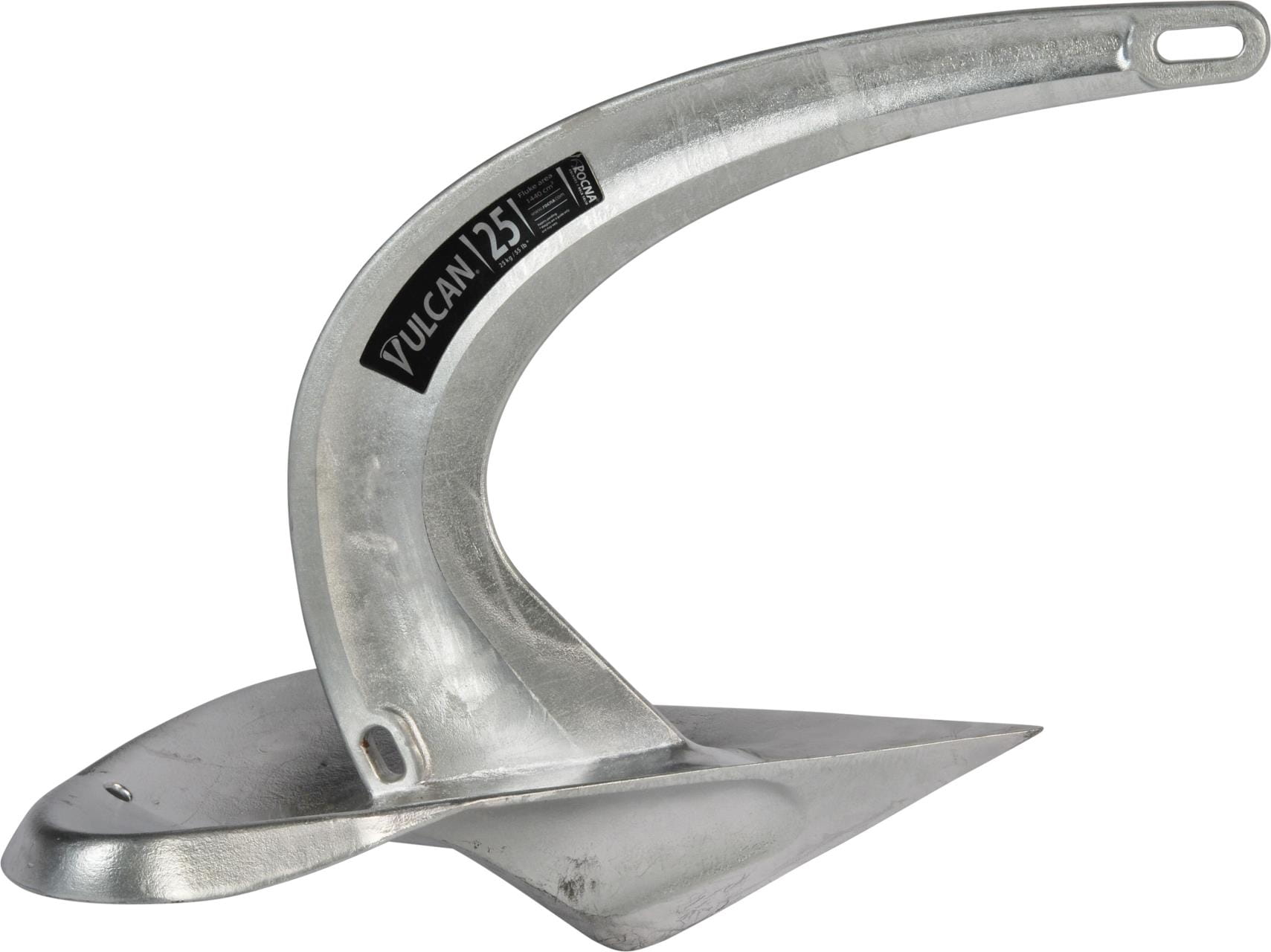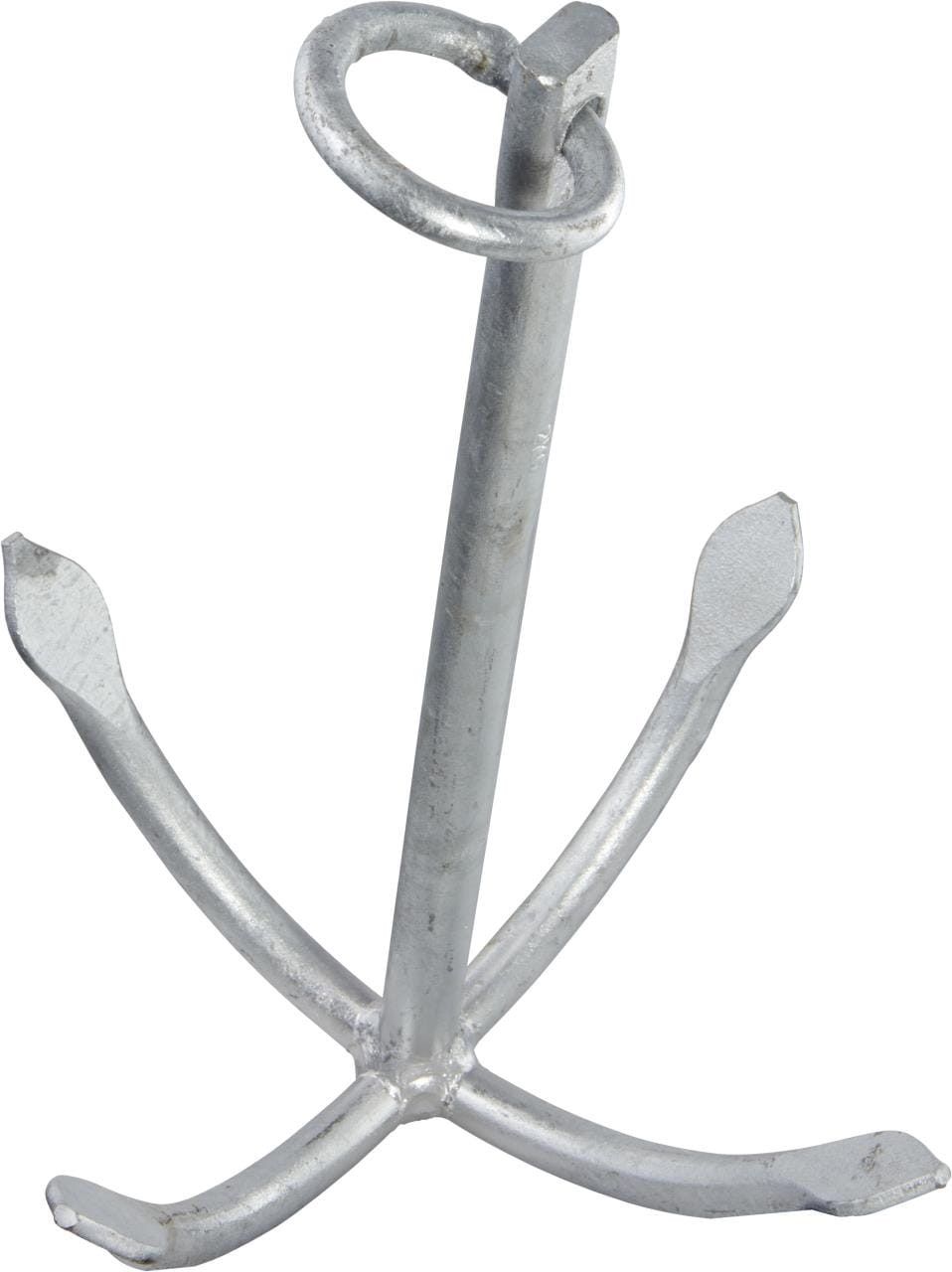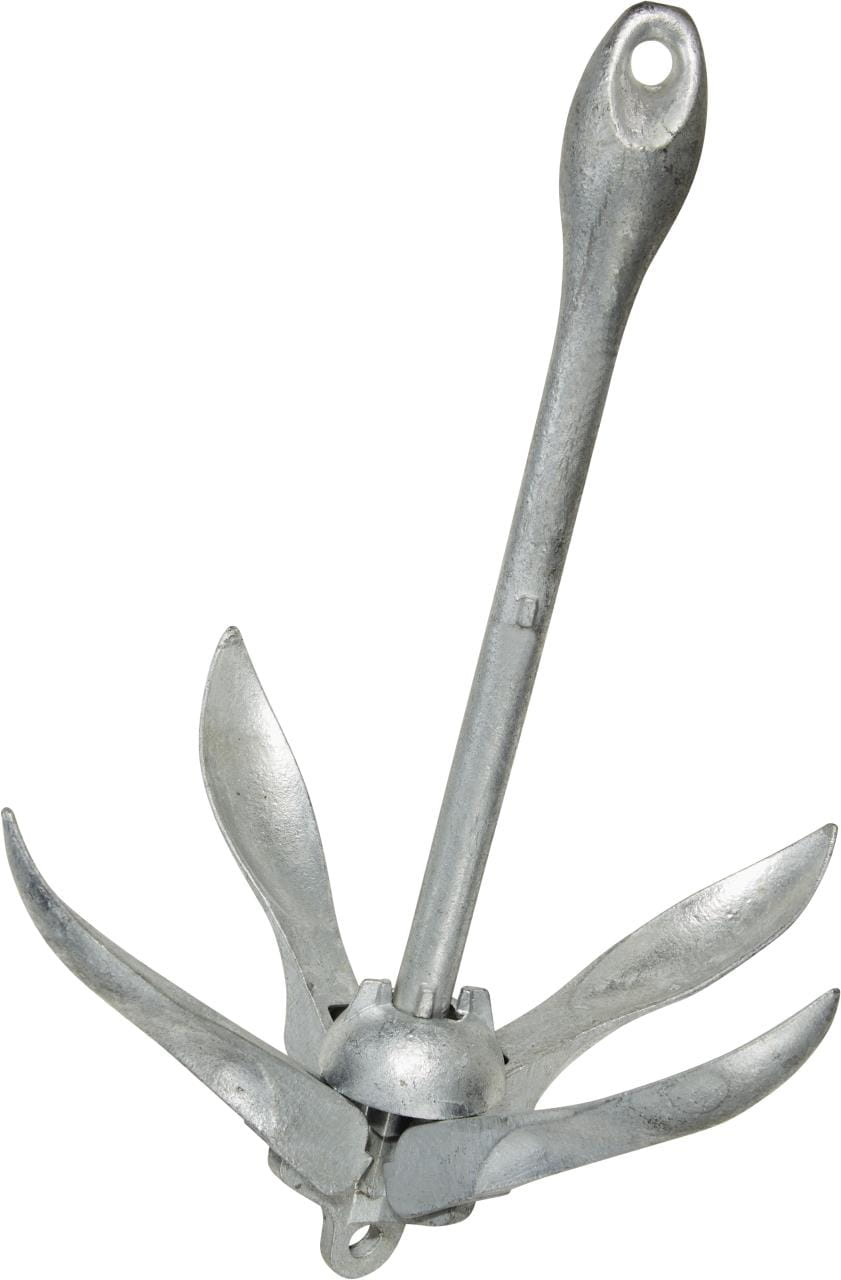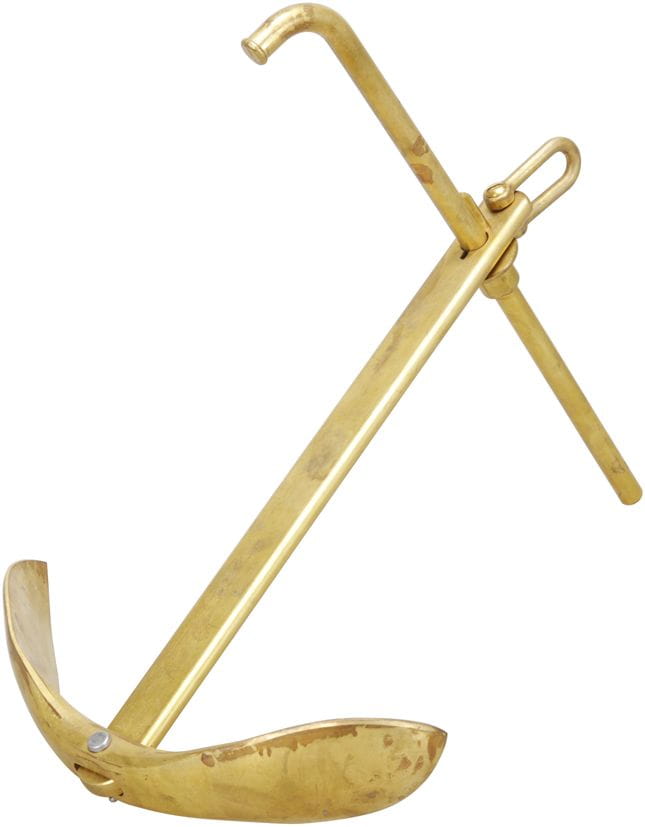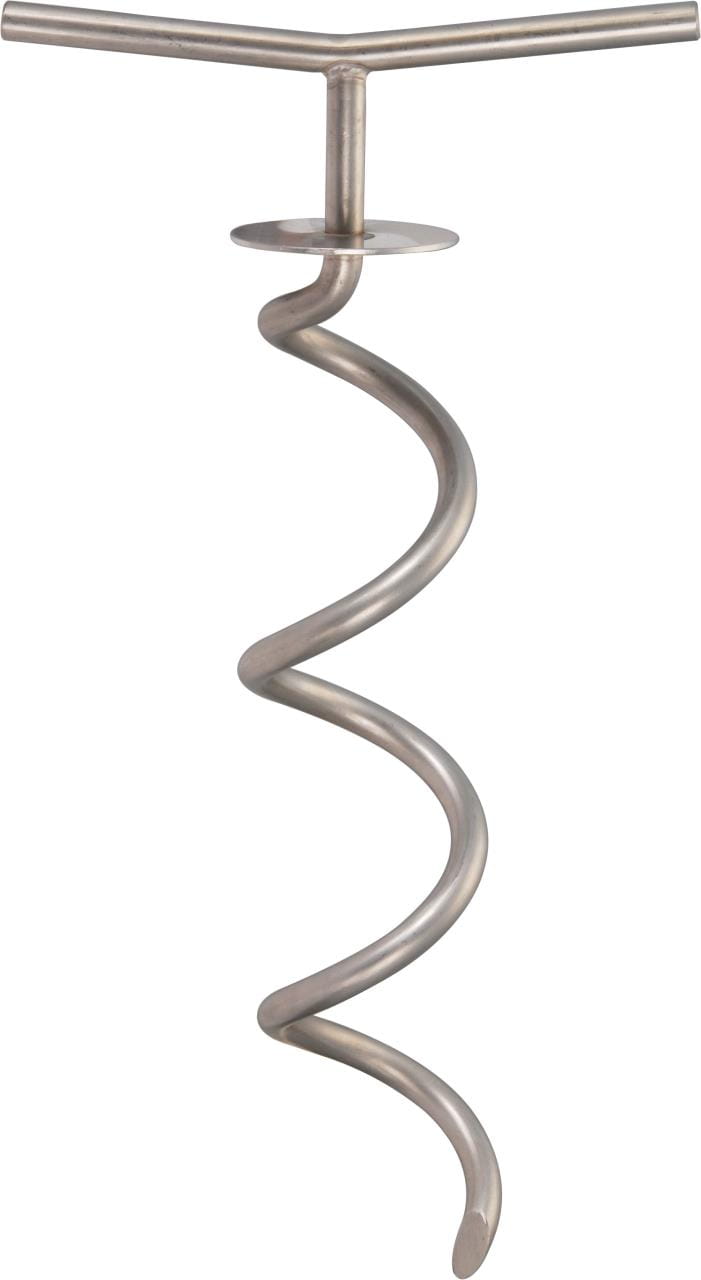The right anchor for your boat
The anchor must hold securely! Regardless of whether you are anchoring in the Baltic Sea, the North Sea or in the strong current of the Elbe. A well-designed anchor in the right size for the boat is a prerequisite for safe and relaxed anchoring. Of course, a small boat or a dinghy needs different anchors than a large sailing yacht or a traditional ship.
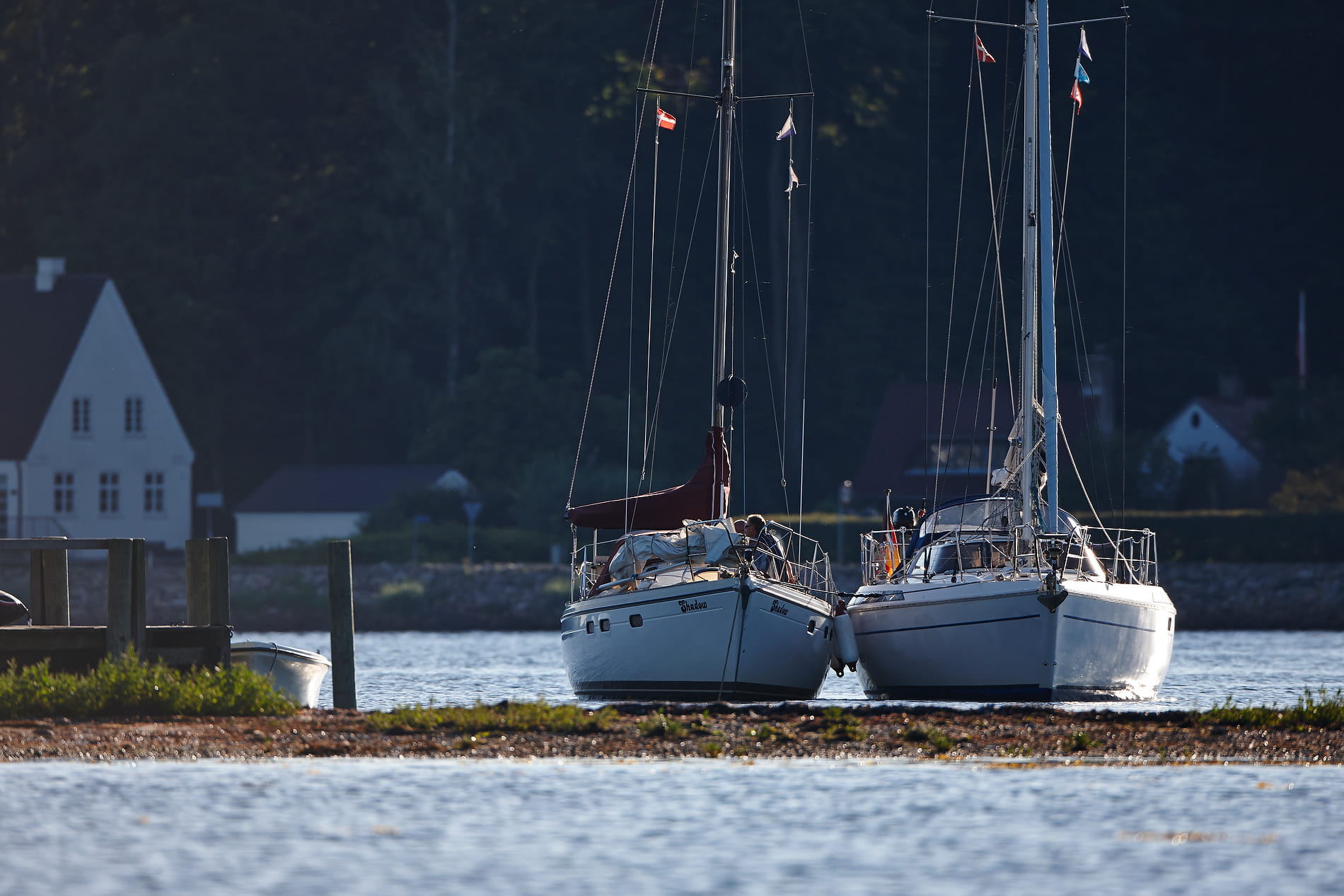
Which anchor is the right one?
Where and when do I want to anchor?
What is the weight and characteristics of my boat?
Where should the anchor be stowed or driven?
1. Plate Anchors with flukes / Danforth Anchors
- Sand
- Silt
- Clay
- Tidal waters
- Low weight in relation to holding force
- Some anchors can be folded or taken apart. They are ideal for smaller boats because they can be stored in a box or in the anchor locker
- Easy to break out of the bottom
- The pointed flukes can cause problems when stowing away
- n rocky ground, the flukes can get caught so that the anchor cannot be released easily
- Not suitable for herbaceous ground with seaweed
Plate Anchors with flukes / Danforth Anchors
2. Ploughshare Anchor
Ploughshare anchors, often called CQR anchors, are modeled on a plow in shape and operation. Ploughshare anchors are an all-rounder for larger boats and yachts over 9 meters in length. They are heavier than plate anchors and are usually used with a bow roller. They dig into weak grounds particularly well, but seaweed or rubble & stones hardly cause them any problems either. The ploughshare anchors include the M anchor, the Delta anchor, the Cobra anchor and the Bruce anchor.
M anchors, also called Bruce anchors, are shaped like a shovel or even a claw. They have no joint between the shank and the plow. These anchors are easy to handle and therefore widely used. M anchors are ideal for center-mounted bow rollers because they conform to the shape of the bow.
Delta anchors are a further development of the plow anchor. They usually have no joint between plow and shank. The LEWMAR Delta Anchor is registered in Lloyds Register as a high performance anchor due to its unique shank profile, is up-certified for commercial use on ships and has a lifetime breakage guarantee.
Bow anchors, such as the ROCNA anchor, are equipped with a roll bar that allows the anchor to straighten out on the seabed, i.e. to always point the fluke towards the bottom, thus it manages to dig through weeds and seaweed as well. When retrieving, it cannot adapt to the boat hull due to its rigid construction and is therefore not suitable for all boat types or must be stored in the anchor locker or in the locker box.
- weak grounds
- seaweed
- stony ground and gravel
Advantages of the Ploughshare Anchors
- The all-rounder digs firmly through the plow even in difficult ground.
- Suitable for using in the bow roll (also in combination with an anchor winch).
- Due to the high weight also suitable for heavy ships.
Disadvantages of the Ploughshare Anchors
- High weight.
- Not as suitable for mud as the Danforth anchors.
Ploughshare Anchor
3. Fischerman Anchor
Fischerman anchors are strong weight anchors that can hold about 10 times their own weight. These anchors are mostly used on older traditional ships. Fisherman anchors have two lateral flukes, at the upper end of the anchor shaft the stick is mounted at a 90° angle. The stick ensures that the anchor always turns at the bottom so that a fluke digs into the ground. Fisherman anchors are ideal for stones, corals, crab bottoms & clayey bottoms.
Fischerman Anchors hold well in
- clayey ground
- seagrass
- stones and gravel
Advantages of the Fischerman Anchor
- Heavy weight anchor with very high holding force.
- The anchor always rotates through the stick so that the flukes can drill optimally into the ground.
Disadvantages of the Fischerman Anchor
- Very heavy anchor.
- The stick makes the anchor very bulky when hoisting.
Fischerman anchor
4. Grapnel Anchors
Grapnel anchors have four flukes. There are these anchors to fold, or with fixed arms. The more powerful folding grapnel anchors are suitable for anchoring, while the small net and search draggies are used for anchoring fishing buoys or small light dinghies.
Folding Grapnel anchors are more suitable for small, light boats and dinghies. The four arms fold in, making these anchors easy to stow as well. Folding anchors are popular for use as stern anchors because they can be stowed into a holder on the stern reling.
Net anchors and search anchors are small traditional anchors with fixed flukes. The anchors - also called fishing anchors - are useful as search anchors (grabbel), dinghy anchors, net anchors, buoy anchors or simply for decoration.
Grapnel Anchors hold well in
- clayey ground
- sand
- stones and pebbles
- seaweed
Advantages of Grapnel Anchors
- The anchors are very light.
- Folding anchors can be easily stowed.
- Suitable for small boats and dinghies.
Disadvantages of the Grapnel Anchor
- The holding force is limited.
Grapnel Anchors
5. Rock Anchor
In rocky waters, for example in Sweden, Norway or Croatia, it is common to moor yachts with a stern anchor at the back and with the bow on land at the front. To secure the lines from the bow of the boat to shore, you need rock anchors, which are clamped between the rocks. A rock hammer for hammering in the anchors is an important tool. For softer ground you can also screw a drill anchor into the ground. The shore anchors have a ring at the top through which the mooring lines are pulled.
Rock Anchors / Shore Anchors hold well in
- crevices of rocks (archipelago anchor)
- firm clay soil (drill anchor)
Advantages of Rock Anchors / Shore Anchors
- You can get ashore through the bow.
Disadvantages of the Rock Anchors / Shore Anchors
- The hooks can get wedged, so you have to leave them ashore.
- A hammer is needed to hammer the archipelago anchors securely into the rock crevices.
Rock Anchor

